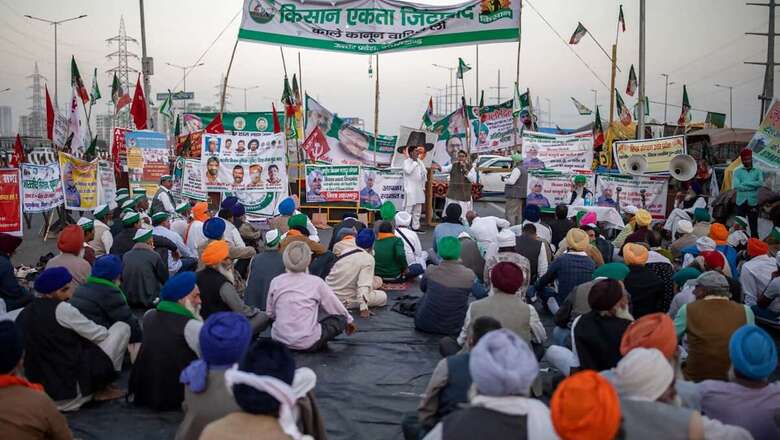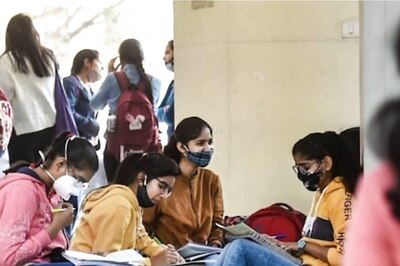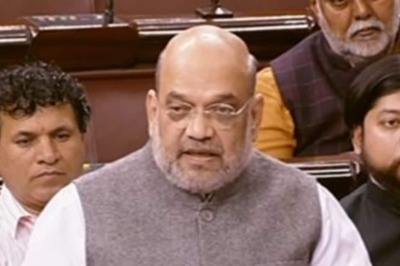
views
Even as the second wave of coronavirus throws life across India out of gear, one group of people appears to be immune. Both to good sense and to accountability. The borders of Delhi are still occupied, the so-called farmer protests are still in full swing. In fact, they are growing in intensity. Yet another contingent of thousands of farmers from Punjab reached Delhi only the other day. The rural countryside of Punjab continues to be in their grip. Beginning May 8, the unions plan to launch another wave of agitation, this time against the lockdown itself.
At a time when the national capital is gasping for breath, can we really afford this? The protesting unions send their members in groups of thousands to gather on the outskirts of Delhi. There, they spend a few days at the protest sites. Then, they go back to their villages even as new ones arrive to take their place. The virus could not have a better ally.
Along with the recklessness, there is both arrogance and denial. Their leaders insist that they will not back down. They say they won’t let the government use the pandemic as an excuse to shut down protests. This tone is hardly reassuring. With over 3,000 people dying each day, playing down the pandemic as some kind of made-up excuse will lead to deadly consequences. Already, Punjab has a case fatality ratio of 2.4 per cent, by far the highest in the country. No other state has crossed even 1.5 per cent. This makes Punjab a clear outlier among all states, whether ruled by the BJP or any other. The disease has hit Punjab with an intensity not seen anywhere else in India. What could be the reason behind this?
Until a few days ago, there were bizarre claims that not even a single case of coronavirus had been found among protesting farmers. These claims were made by NGOs which had shown up to provide support at protest sites and in the name of supposed doctors they had brought with them. They also pushed theories that the protesters had better immunity and couldn’t possibly get infected. This is a recipe for disaster.
In any case, a protest for what? The government has already offered to suspend the implementation of the three new farm laws for 18 months. The laws will not be implemented as long as the matter is with the Supreme Court. In other words, the new laws will have no impact on the lives of the protesting farmers for at least another year, possibly more. How is this not enough to grant even a temporary reprieve to the Indian government even as the nation struggles with a world war-level crisis? If the second wave peaks in May, the nation could start reopening by June.
If it does not, lakhs of lives and millions of livelihoods are on the line here. Why are they trying to make this worse? What does it say about the intent of those protesting?
There is a strange rationalization going around on this. It puts the onus on the government to repeal the laws immediately, so that the protesters could go home. But that would quite literally be like paying a ransom. The laws have been passed by Parliament. How could they be taken back just because someone threatens to hold super-spreader events around the Capital and put lakhs of lives at risk?
Then there is the question of accountability. In the last few weeks, every kind of mass gathering has come under intense criticism. They could be anything, from weddings to funerals, any kind of religious gathering, political rallies or even regular people out shopping in crowded markets. In all of this, the protest by farmer unions has enjoyed a peculiar kind of immunity. Their members continue to hold crowded marches and rallies, most often without a single person wearing a mask. And this goes by without any comment, especially from a class of commentators who seem otherwise most anxious about India’s coronavirus response. It is not like these people ignore farmer unions as a general rule. In fact, from November to March, this was all they appeared to care about. If this is all about politics and it likely is, we the people are certainly not winning here.
In fact, let us talk about what happened in this country between November of last year and March this year. We had all but forgotten about the pandemic. In newspapers, on television and on social media, the focus remained firmly on the protest by farmer unions. Wildly exaggerated numbers were thrown around, with their supporters calling it the largest protests in the world. The gatherings at the borders of Delhi were made into places of pilgrimage. The public discourse was flooded with protest songs, poetry and caricatures in support of the so-called movement. This was followed by a series of massive mahapanchayats across northern India. The farmer union leaders basked in the glory.
So who really gave the message to the general public that the pandemic is over?
We have 130 crore people in this country. Without everyone behaving sensibly, we stood no chance. But, for the average person, the subtext of the ‘kisan mahapanchayats’ was clear. Go out and play, for there is nothing to worry about any more. Most of us were naturally anxious to get back to our normal lives. We bought into this message. Then, the virus came back.
Two months ago, The New York Times carried a full-page advertisement, an ode to a “million” people protesting in India. The real numbers were nowhere close to that, but it was more about the message. Recently, The New York Times carried a front page photo of funeral pyres burning in Delhi. In other words, the global media made money out of this both ways. We suffered.
The supposed farmers’ protest is obviously a super-spreader on the ground. But its real super-spreader effect was what it did to our minds for four straight months. It is time they stopped. I think they have done enough.
Read all the Latest News, Breaking News and Coronavirus News here. Follow us on Facebook, Twitter and Telegram.



















Comments
0 comment